Tackling Northern Ireland's dilapidated and derelict buildings
- Published
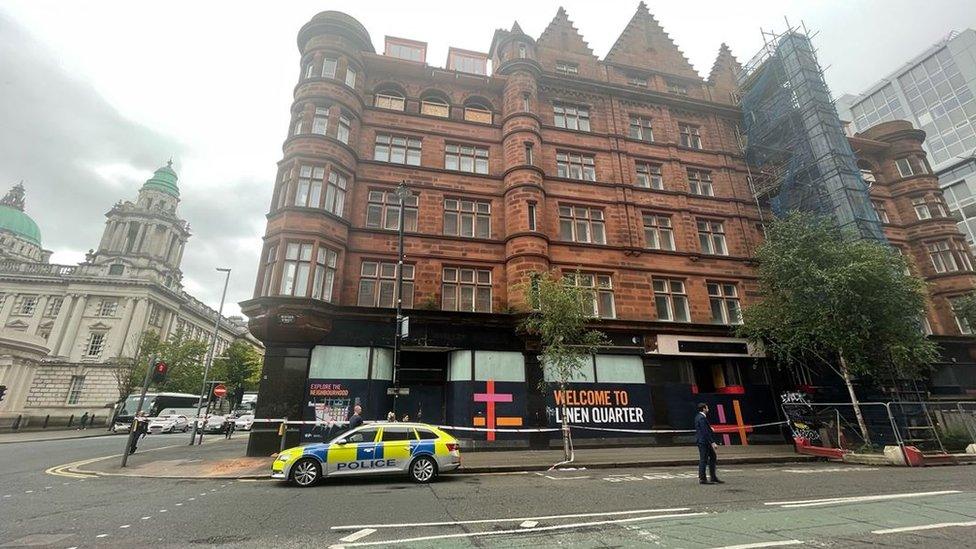
Masonry fell onto the pavement from the failed George Best hotel project in Belfast earlier this year
Northern Ireland's buildings are at risk of rotting beyond the point of salvage, a Belfast councillor has said.
A Dilapidation Bill, which would have given councils more powers to deal with abandoned and derelict properties, was due to be introduced to the Assembly in 2021.
The SDLP's Donal Lyons said he can not understand why the bill had stalled.
The Department of Agriculture and Environment (DAERA) has said "other priority work areas" took precedence.
There are currently 762 historic buildings on the Heritage at Risk in Northern Ireland register., external
This was an increase of 142 from 2019/20.
The register was set up by the Department of Communities and Ulster Architectural Heritage to record, highlight and tackle buildings at risk.
In 2016, DAERA carried out a formal public consultation of the proposed Dilapidation Bill but it has not progressed since.
A department spokesperson said work on Northern Ireland's first Environment Strategy meant a "substantial economic appraisal", needed before the bill could be introduced, had not been completed.
'Worsening over the years'
Mr Lyons, who raised the issue at council after masonry fell from a derelict, stalled hotel project, said dereliction had been "worsening over the years".
"If this bill does not come and these buildings are left to rot with water getting in, they may be beyond salvage.
"We have these buildings which have been boarded up, many of them may only need a lick of paint to be back in use," he said.
Alliance MLA Andrew Muir, who has tabled a question to the minister asking when the bill might be introduced, said that it was a worry for councils that they could not act in an emergency.
"Just look at the George Best Hotel, we were lucky that no one was hurt but it shouldn't get to that stage," he said.
"Besides safety there is heritage, we are at risk of losing these buildings."
'Very little help'
In Strangford a couple took on a church that had been at risk more than a decade.
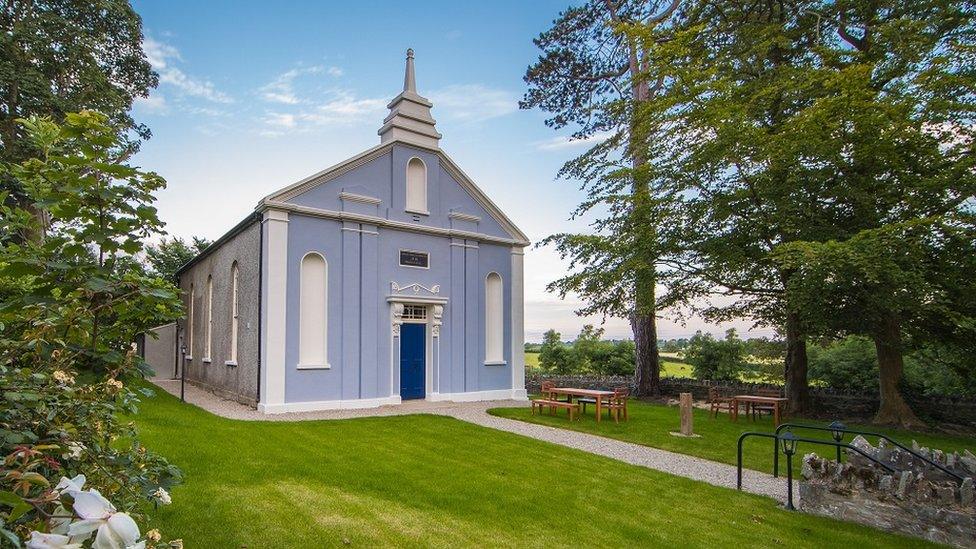
The Quarry Hill Presbyterian Church in Strangford is an award-winning restoration project
The Quarry Hill Presbyterian Church had been on the Heritage at Risk register for 13 years when it was purchased by architect Melanie Hamill and her engineer husband Martin in 2016.
Mrs Hamill undertook conservation courses through the Royal Society of Architects (RSUA) to prepare herself for the work.
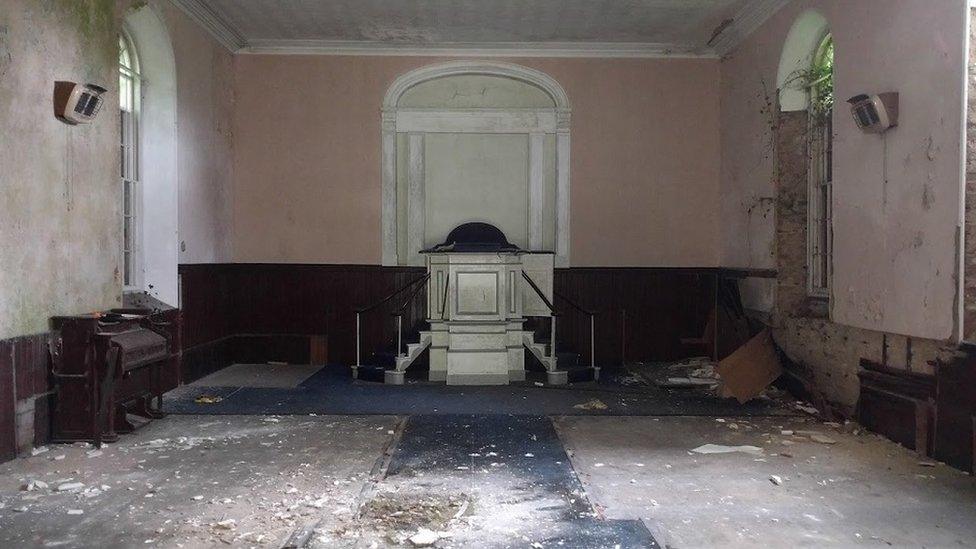
The church was in a poor state of repair
She said their priority was to repair the church's leaking roof and broken windows in order to make the church watertight, and prevent further damage.
"I had worked on modern buildings, designing new builds or extensions, but was aware that with historic, traditional buildings a whole-building approach is needed when considering making any changes to the fabric," she said.
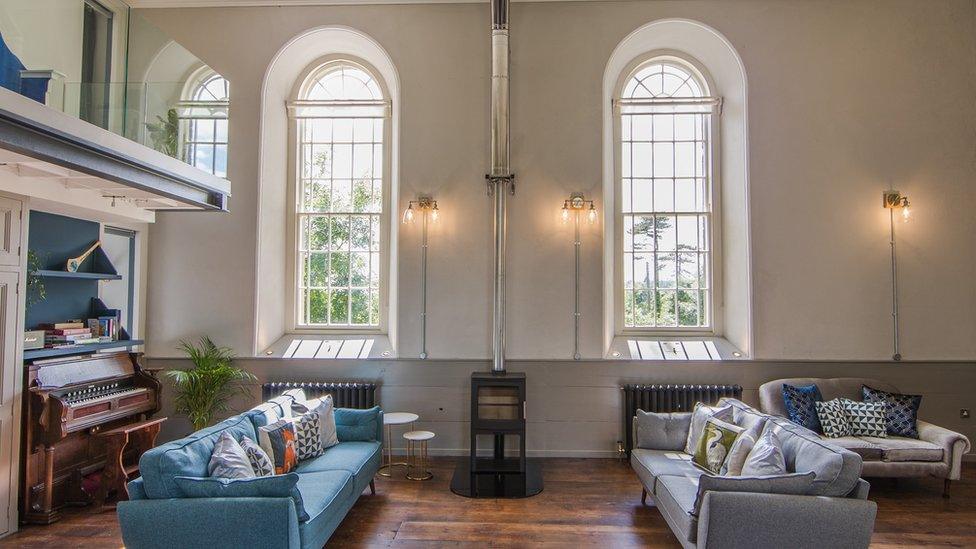
The couple picked up the Heritage Angel Award for "Best Rescue of An Historic Building" in 2019
"We had very little help financially with the project.
"The VAT payable on new build projects is set as zero, whereas unfortunately on refurbishment projects it is set at 20%. This adds to the financial burden on anyone trying to carry out a refurbishment".
'It takes a long time'
In 2021, a group of local volunteers formed the Kilmore O'Neill Trust (KOT) to find a sustainable use for a thatched cottage in the village of Kilmore, County Armagh.

Kilmore Cottage in County Armagh dates back to at least the early 18th Century
Kilmore Cottage dates back centuries, first appearing on a map of the village in 1707.
KOT chair, Conor Sandford, said they are asking the community for input as to what it should be used for.
"The biggest issue is that in 1950 there were 30,000 thatched buildings on the island of Ireland but today only 144 are left.
"With the skill being lost, it just makes it more expensive," he said.
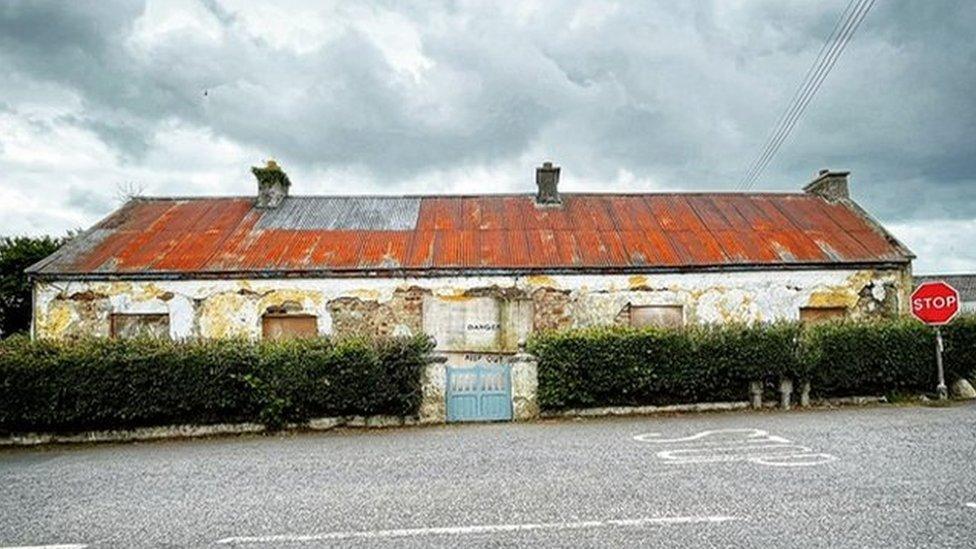
Local people have come together in a bid to salvage the building
"It takes a long time, even with great support such as the Architectural Heritage Fund, with it only getting further dilapidated in the interim.
"Some get into a position and require lottery funding, which is great, but it shouldn't get to that stage."
'Erosion of character'
Brothers Nathan and Carl Hughes grew up in Glandore, Belfast - one of 57 parts of the Belfast City Council area which have been designated as an Area of Townscape Character (ATC).
Last year, the pair established Restore Glandore ATC Community Group to combat the "erosion of character" in the area.
"Growing up on the Antrim Road you could see many Georgian and Victorian mansions and villas within close proximity of our home" said Carl.
"Unfortunately many of those beautiful homes are now gone due to poor planning decisions."
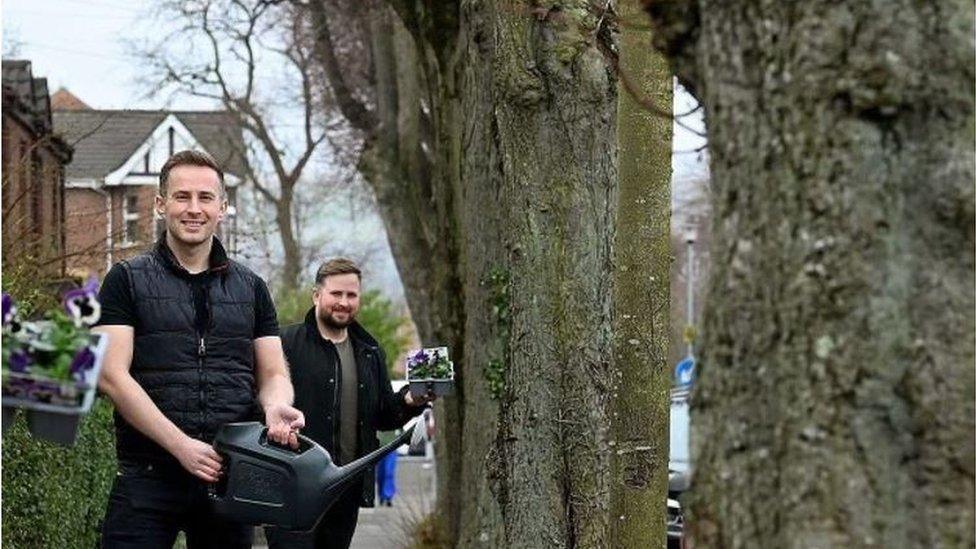
Nathan and Carl Hughes are concerned about the loss of historic buildings in their area
"A lot of the listed buildings are Georgian but Belfast had a significant boom in the Victorian era, which is when the majority of its older buildings were built," said Nathan.
"These old Victorian buildings tell the history and set the tone for the area. North Belfast was one of, if not the most, sought after area during this time."
Sustainability
Marcus Patton, of Ulster Architectural Heritage, said the Dilapidation Bill had "fallen to the wayside".
"The concern at the moment is there are a variety of approaches to deal with dereliction.
"Council and government expect each other to act but neither does, this legislation should rationalise this," he added.
"We shouldn't be demolishing anything now, for sustainability, new buildings require new materials with the existing property going to landfill."
DAERA said that the Dilapidation Bill team has now been re-established and officials were in the process of finalising the economic appraisal.
"It is hoped that the Bill can be introduced as soon as practicable in this Assembly mandate."
- Published21 June 2022

- Published4 April 2022
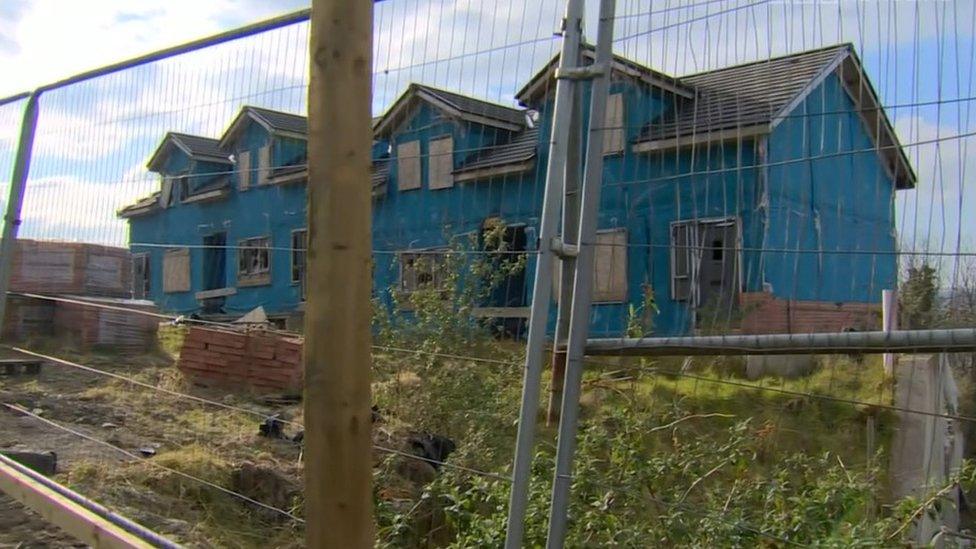
- Published28 August 2019
